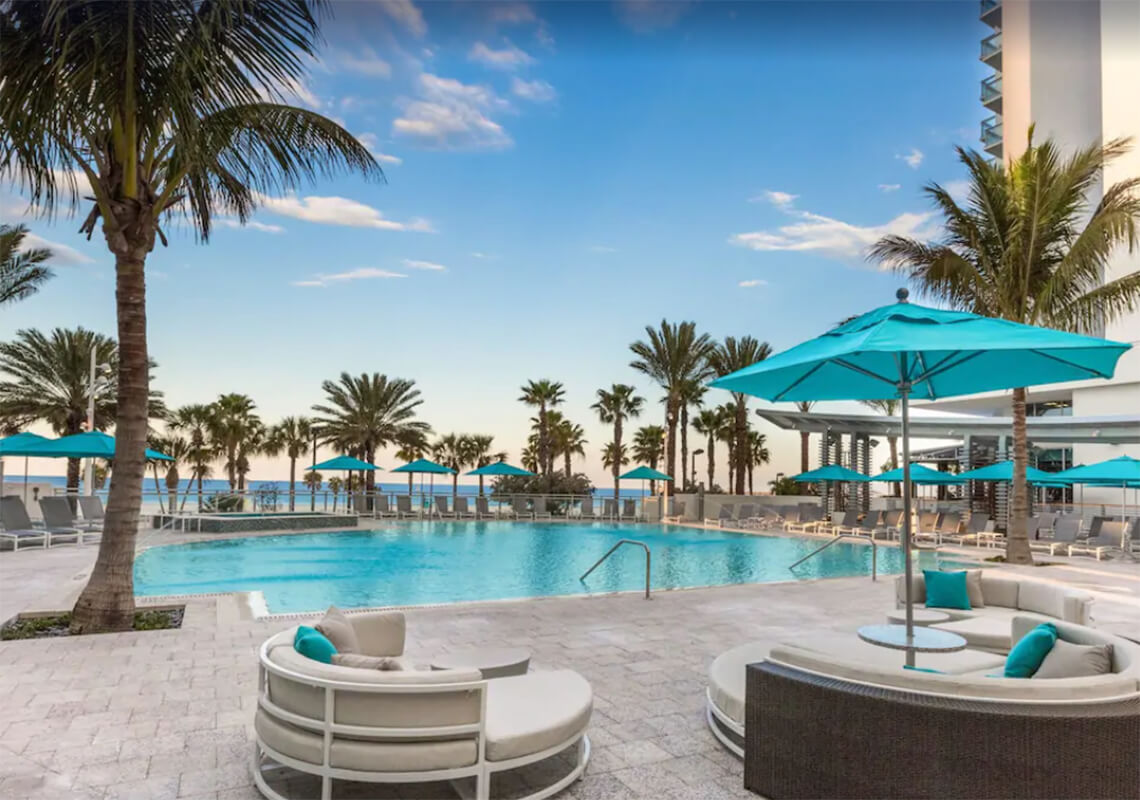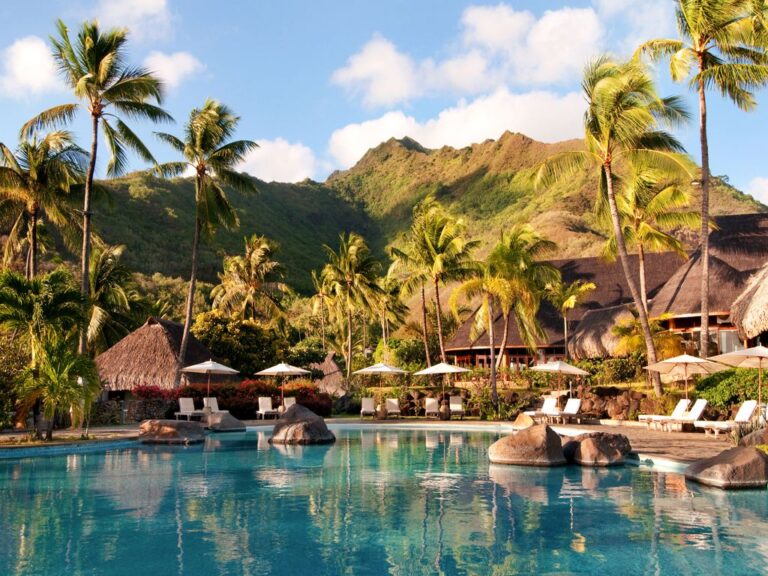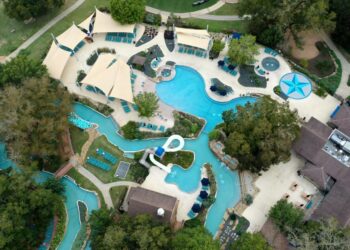The irresistible allure of the ocean has captivated humanity for centuries, drawing us to its shores for relaxation, adventure, and rejuvenation. Coastal resorts stand as the epitome of this attraction, offering idyllic havens where the rhythmic sound of waves, the warmth of the sun, and the invigorating sea breeze define the very essence of a getaway. These specialized properties are meticulously designed to maximize their proximity to the sea, providing guests with unparalleled access to beaches, breathtaking views, and a myriad of water-based activities. For anyone dreaming of a quintessential seaside escape, a coastal resort promises not just a stay, but an immersive experience where the ocean is both the backdrop and the protagonist of their vacation story. This extensive article will explore what makes coastal resorts so captivating, the diverse experiences they offer, their significant impact on both travelers and local communities, and how they are adapting to meet the evolving demands of modern tourism.
The Features of a Premier Coastal Resort

A truly exceptional coastal resort harmonizes luxurious comfort with the natural beauty of its surroundings, creating an environment that celebrates the ocean in every detail.
A. Prime Oceanfront Location and Access
The most fundamental characteristic of a coastal resort is its prime oceanfront location and direct access to the beach or coastline. This means:
A. Private or Exclusive Beaches: Many top-tier resorts boast their own stretches of private beach, ensuring tranquility and exclusivity for guests away from public crowds.
B. Seamless Beach Access: Designed pathways, elevators, or direct stairs lead guests effortlessly from their rooms or resort facilities straight to the sand, making beach visits convenient and frequent.
C. Breathtaking Ocean Views: Guest rooms, restaurants, and common areas are strategically positioned to offer panoramic vistas of the ocean, sunrises, and sunsets, making the natural beauty an integral part of the experience.
D. Waterfront Dining and Lounging: Restaurants, bars, and lounges are often situated right on the beachfront or overlooking the sea, allowing guests to dine or relax while soaking in the coastal atmosphere.
This immediate connection to the sea is what elevates a coastal resort above other types of accommodation.
B. Extensive Water-Based Activities
Coastal resorts are playgrounds for water enthusiasts, offering an extensive range of water-based activities that cater to all ages and skill levels.
A. Swimming and Sunbathing: The most popular activities, with designated areas for safe swimming and ample lounge chairs and cabanas for relaxation.
B. Non-Motorized Water Sports: Complimentary or rental options for kayaks, paddleboards, snorkeling gear, and sometimes sailing dinghies, encouraging active engagement with the sea.
C. Motorized Water Sports: Offered either on-site or through partnerships, including jet skiing, parasailing, wakeboarding, and banana boat rides for thrill-seekers.
D. Diving and Snorkeling Excursions: Many resorts have PADI-certified dive centers or organize guided snorkeling trips to explore vibrant coral reefs and marine life.
E. Boat Trips and Fishing Charters: Opportunities for sunset cruises, island hopping, deep-sea fishing, or wildlife spotting tours (e.g., dolphin or whale watching).
These activities ensure that guests can fully embrace the aquatic environment, from serene exploration to exhilarating adventure.
C. Thoughtful Marine-Inspired Design
The architecture and interior design of coastal resorts are almost invariably influenced by their natural surroundings, showcasing thoughtful marine-inspired design.
A. Natural Materials: Incorporating local stone, wood, and other organic materials that blend with the coastal landscape.
B. Open-Air Spaces: Maximizing natural light and sea breezes through open-plan lobbies, expansive terraces, and large windows or sliding doors that blur the lines between indoors and outdoors.
C. Coastal Color Palettes: Using hues of blue, green, sand, and white to evoke tranquility and freshness, mirroring the ocean and sky.
D. Thematic Decor: Integrating elements like seashells, driftwood, nautical accents, or local marine art to create a cohesive and immersive coastal ambiance.
The design is not just aesthetic; it enhances the connection to the seaside environment, creating a perpetual holiday feeling.
D. Specialized Dining Experiences
Dining at a coastal resort is often an experience in itself, with a strong emphasis on fresh, local, and often seafood-centric cuisine. Specialized dining experiences include:
A. Fresh Seafood Restaurants: Often featuring “catch of the day” specials, sourcing directly from local fishermen.
B. Beachfront Dining: Romantic dinners with toes in the sand, BBQ nights, or casual lunches right by the water.
C. Al Fresco Options: Maximizing outdoor seating to allow guests to enjoy the sea breeze and views.
D. Swim-Up Bars: Convenient bars located within pools, offering refreshing drinks without leaving the water.
E. Local Culinary Integration: Highlighting regional flavors, spices, and cooking techniques that reflect the coastal community’s heritage.
The culinary offerings are designed to complement the refreshing, relaxed atmosphere of a seaside escape.
E. Relaxation and Wellness Facilities
Coastal resorts are synonymous with relaxation and rejuvenation, providing a range of relaxation and wellness facilities that leverage the calming effects of the ocean.
A. Oceanfront Spas: Spas with treatment rooms offering sea views or even outdoor massage pavilions, integrating the sounds of the waves into therapeutic sessions.
B. Yoga and Meditation: Classes often held on beachfront platforms or overlooking the ocean, enhancing mindfulness and serenity.
C. Infinity Pools: Designed to create an illusion of merging with the ocean, providing stunning visual effects and a sense of boundless tranquility.
D. Relaxation Lounges: Quiet areas with comfortable seating, often with ocean views, for reading, quiet contemplation, or simply unwinding.
E. Wellness Programs: Some resorts offer specialized programs focusing on marine therapy, thalassotherapy (using seawater and marine products), or holistic wellness inspired by coastal elements.
The focus is on creating a peaceful sanctuary where guests can truly unwind and recharge.
The Evolution of Coastal Resort Tourism
The coastal resort sector has continually evolved, driven by shifts in traveler preferences, environmental awareness, and technological advancements.
A. From Seasonal Stays to Year-Round Destinations
Historically, many coastal resorts were highly seasonal, thriving only during summer months. However, with improved infrastructure, flight connectivity, and diversified offerings, many have transformed into year-round destinations. This includes:
A. Wellness Tourism: Promoting off-season wellness retreats.
B. Event Tourism: Hosting conferences, weddings, or festivals outside peak sunbathing months.
C. Sporting Events: Attracting visitors for golf, tennis, or surfing competitions regardless of typical beach weather.
This diversification helps sustain local economies throughout the year.
B. Emphasis on Sustainable and Eco-Conscious Practices
There’s a growing and crucial emphasis on sustainable and eco-conscious practices in coastal resorts. Recognizing their direct impact on fragile marine ecosystems, many resorts are implementing:
A. Coral Reef Restoration: Investing in and facilitating projects to protect and restore local coral reefs.
B. Plastic Reduction Initiatives: Eliminating single-use plastics from operations, offering reusable water bottles, and promoting responsible waste management.
C. Water Conservation: Implementing greywater recycling, efficient irrigation, and low-flow fixtures.
D. Marine Conservation Programs: Educating guests about local marine life, supporting local conservation efforts, and offering eco-friendly excursions.
E. Sustainable Sourcing: Prioritizing locally caught, sustainable seafood and locally grown produce, reducing carbon footprint and supporting local communities.
This shift reflects a commitment to protecting the very environment that makes coastal resorts so appealing.
C. Integration of Technology for Enhanced Guest Experience
Technology is being seamlessly integrated to enhance the coastal resort guest experience, without detracting from the natural environment.
A. Digital Concierge Services: In-room tablets or mobile apps allow guests to book activities, order room service, or access information about marine life and local excursions.
B. Smart Room Controls: Managing lighting, temperature, and even curtain positions to maximize ocean views with a touch of a button.
C. Personalized Recommendations: AI-driven systems suggesting water sports based on guest preferences or local weather conditions.
D. Underwater Photography/Videography: Resorts offering rental equipment or professional services to capture stunning marine encounters.
Technology aims to elevate convenience and enjoyment, allowing guests to fully immerse themselves in their coastal escape.
D. The Rise of “Bleisure” and “Workcation” Models
Coastal resorts are increasingly catering to the “bleisure” traveler who blends business with leisure, and the “workcation” trend. This means:
A. Enhanced Connectivity: Robust Wi-Fi across the property, including beach and pool areas.
B. Co-Working Spaces: Dedicated quiet zones or business centers for remote work.
C. Extended Stay Offers: Special packages for guests looking to work remotely from a beautiful coastal setting for weeks or months.
This trend allows professionals to combine productivity with the rejuvenating benefits of a seaside environment.
E. Experiential and Immersive Offerings
Modern coastal resorts are moving beyond passive relaxation to offer more experiential and immersive offerings.
A. Local Cultural Immersion: Workshops on local crafts, cooking classes focusing on regional coastal cuisine, or traditional music and dance performances.
B. Adventure Tourism: Curated excursions like deep-sea diving, kitesurfing lessons, or guided hikes along coastal trails.
C. Wellness Retreats: Specialized programs focusing on marine-inspired therapies, oceanfront yoga, or mindfulness sessions, leveraging the natural healing power of the sea.
The focus is on creating deeper connections with the destination and fostering memorable personal growth.
The Economic and Societal Impact of Coastal Resorts

Coastal resorts are powerful economic engines, playing a vital role in the prosperity and development of their regions, while also having significant social and environmental responsibilities.
A. Major Economic Drivers for Coastal Communities
Coastal resorts are often the primary economic drivers for coastal communities, especially in developing regions. They:
A. Generate Revenue: Through accommodation, dining, activities, and ancillary services, contributing to local GDP.
B. Create Employment: Offering a wide range of jobs from management and marketing to culinary arts, water sports instructors, housekeeping, and maintenance. This provides stable livelihoods for thousands of locals.
C. Stimulate Local Businesses: Relying on local suppliers for food, beverages, crafts, and services, creating a powerful multiplier effect that benefits small businesses and entrepreneurs.
This economic impact can transform entire regions.
B. Infrastructure Development and Investment
The presence of coastal resorts often triggers significant infrastructure development and investment. This includes:
A. Improved Transportation: Development of airports, roads, and port facilities to accommodate tourists.
B. Utilities: Investment in water treatment, electricity, and waste management systems.
C. Community Facilities: Sometimes, resorts contribute to the development of local schools, health clinics, or community centers as part of their social responsibility initiatives.
This development benefits both tourists and local residents.
C. Preservation of Natural Assets (When Done Responsibly)
When managed responsibly, coastal resorts can be powerful allies in the preservation of natural assets. Their economic reliance on healthy ecosystems (beaches, coral reefs) incentivizes:
A. Environmental Conservation: Funding and participating in marine protected areas, beach clean-ups, and anti-pollution efforts.
B. Responsible Tourism Practices: Educating guests on respectful interactions with marine life and fragile ecosystems.
C. Sustainable Resource Management: Advocating for policies that protect coastal environments from overdevelopment or pollution.
This demonstrates how tourism can be a force for conservation, provided there is a strong commitment to sustainability.
D. Cultural Exchange and Local Empowerment
Coastal resorts facilitate cultural exchange by bringing diverse travelers into contact with local customs, traditions, and people. When done ethically, this can lead to:
A. Local Empowerment: Providing opportunities for locals to share their culture through performances, crafts, and culinary experiences, promoting cultural pride.
B. Skill Development: Training locals in hospitality roles, equipping them with valuable skills that can be applied within the tourism sector and beyond.
C. Mutual Understanding: Fostering appreciation and understanding between visitors and host communities.
This exchange can be a powerful tool for mutual growth and respect.
E. Community Development Initiatives
Many responsible coastal resorts engage in various community development initiatives. This can include:
A. Supporting Local Schools: Providing educational resources, scholarships, or infrastructure improvements.
B. Health and Wellness Programs: Funding or running local clinics, health awareness campaigns, or sanitation projects.
C. Fair Trade Practices: Ensuring fair wages and working conditions for local employees and suppliers.
These initiatives demonstrate a commitment to being a positive force in the communities where they operate.
Choosing Your Ideal Coastal Resort
Selecting the perfect coastal resort involves more than just picking a pretty beach. Consider these factors to ensure your dream ocean escape becomes a reality.
A. Define Your Vacation Style and Priorities
Before you begin your search, define your vacation style and priorities. Are you seeking:
A. Pure Relaxation: A tranquil environment, perhaps an adults-only resort, with spa facilities and quiet beaches.
B. Family Fun: A resort with extensive kids’ clubs, water parks, and family-friendly activities.
C. Adventure and Activity: A resort offering a wide range of water sports, diving, or excursions.
D. Romantic Getaway: An intimate setting, perhaps adults-only, with fine dining and couples’ activities.
E. Eco-Conscious Travel: A resort with strong sustainability credentials and opportunities for nature immersion.
Your preferred style will guide your selection.
B. Research the Beach and Ocean Conditions
The quality and type of beach and ocean conditions are paramount.
A. Sand Type: Is it soft white sand, rocky, or pebbly?
B. Water Clarity and Calmness: Is the water suitable for swimming, snorkeling, or young children (calm, clear)?
C. Tides: Are there significant tidal changes that affect beach accessibility?
D. Marine Life: Are there reefs for snorkeling, or specific marine life you hope to encounter (e.g., turtles, dolphins)?
E. Crowds: Is the beach private to the resort, or is it a public, potentially crowded area?
Photos and recent guest reviews are crucial for this research.
C. Evaluate Water Sports and Activities Offered
If water sports are a priority, thoroughly evaluate the water sports and activities offered.
A. Inclusions: Are activities complimentary, or are there additional costs?
B. Variety: Do they offer the specific activities you’re interested in (e.g., kitesurfing, scuba diving, sailing)?
C. Instruction: Are lessons available for beginners? Are instructors certified?
D. Equipment Quality: Is the equipment well-maintained and safe?
E. Excursions: What types of boat trips or island excursions are available?
D. Consider Dining Options and Culinary Focus
The dining options and culinary focus should align with your preferences.
A. Variety of Restaurants: Does the resort offer a diverse range of cuisines (local, international, fine dining, casual)?
B. Fresh Seafood: Is fresh, locally sourced seafood a highlight?
C. Dietary Accommodations: Can they cater to allergies or specific dietary needs?
D. View/Ambiance: Are there appealing beachfront or ocean-view dining experiences?
E. Meal Plans: Does an all-inclusive or half-board option offer good value for your family or group?
E. Check Sustainability and Environmental Practices
For eco-conscious travelers, check the resort’s sustainability and environmental practices. Look for:
A. Certifications: Are they certified by reputable environmental organizations?
B. Plastic Reduction: Do they actively work to reduce single-use plastics?
C. Marine Conservation Efforts: Are they involved in protecting local marine ecosystems?
D. Local Sourcing: Do they prioritize local and sustainable suppliers?
E. Waste Management: Do they have comprehensive recycling and waste reduction programs?
This demonstrates a commitment to responsible tourism.
The Future of Coastal Resorts
The trajectory for coastal resorts is towards deeper integration with nature, enhanced personalization through technology, and a stronger commitment to environmental and social stewardship.
- Regenerative Ocean Tourism: Future coastal resorts will increasingly embrace regenerative tourism, actively participating in marine ecosystem restoration, supporting local coastal communities beyond financial contributions, and educating guests on how to contribute positively.
- Immersive Underwater Experiences: Expect more advanced immersive underwater experiences, possibly through transparent underwater rooms, virtual reality marine sanctuaries, or bioluminescent night diving tours, offering unprecedented access to the ocean’s depths without environmental impact.
- AI-Driven Personalized Marine Activities: AI will tailor water sports and marine excursions based on guest interests, skill levels, and even real-time weather and tide conditions, suggesting optimal times for snorkeling, diving, or paddleboarding.
- Floating and Modular Resorts: As sea levels rise and coastal spaces become scarce, innovation may lead to more floating or modular coastal resorts that can adapt to changing environments, built with sustainable materials and minimal ecological footprint.
- Hyper-Localized Culinary Journeys: Dining will become even more focused on hyper-localized culinary journeys, featuring indigenous coastal ingredients, traditional fishing techniques, and collaborations with local fishing communities to offer truly authentic and sustainable seafood experiences.
- Advanced Water Management Systems: Resorts will implement cutting-edge water management systems that purify and reuse greywater for irrigation, desalinate seawater efficiently, and drastically reduce overall freshwater consumption, demonstrating leadership in resource management.
- Biophilic Design and Nature Integration: Architectural design will further emphasize biophilic principles, seamlessly integrating natural elements, open spaces, and green infrastructure to enhance guest well-being and connect them more deeply with the coastal environment.
Conclusion
Coastal resorts are more than just idyllic getaways; they are dynamic ecosystems that bridge the desires of travelers with the unparalleled beauty of the ocean. By continuously innovating in sustainability, technology, and guest experiences, they promise a future where beach bliss and environmental responsibility go hand-in-hand, ensuring that the magic of ocean escapes remains accessible and preserved for generations to come.










